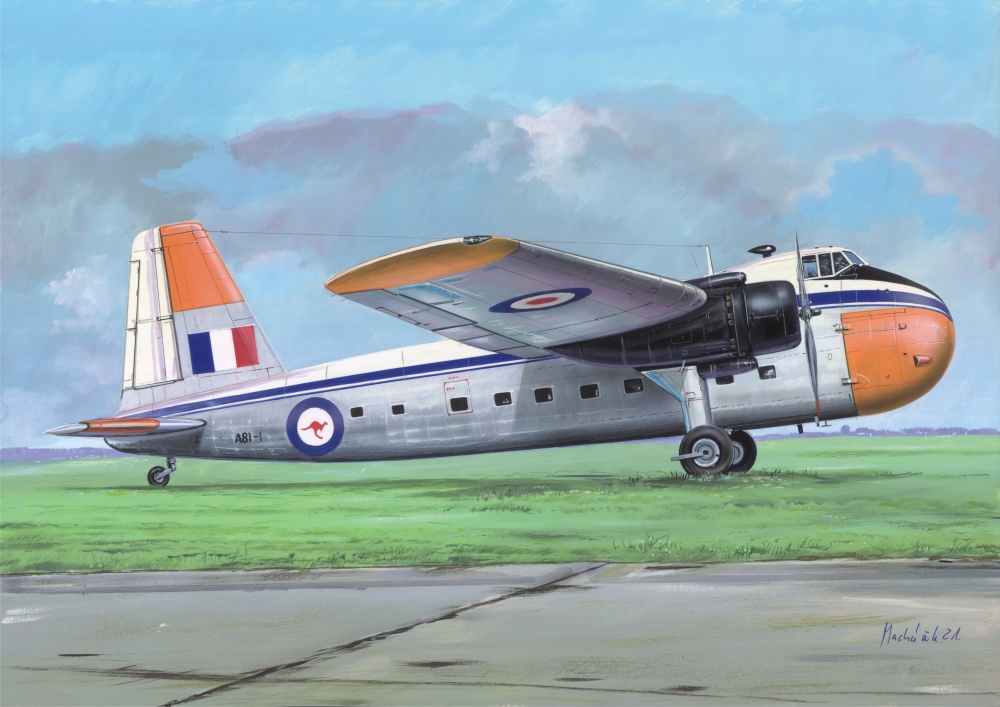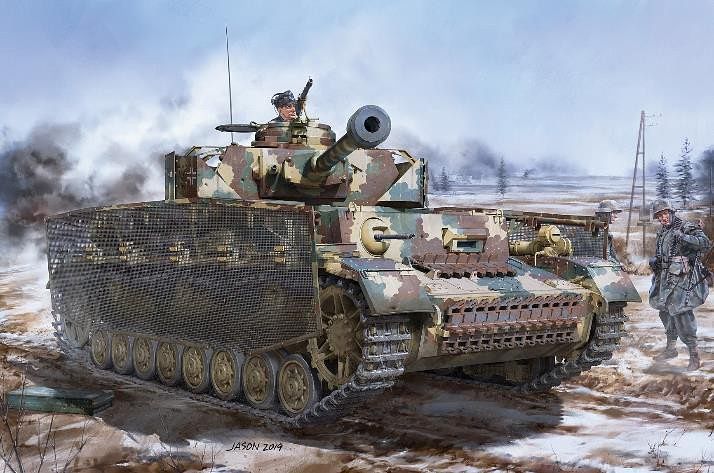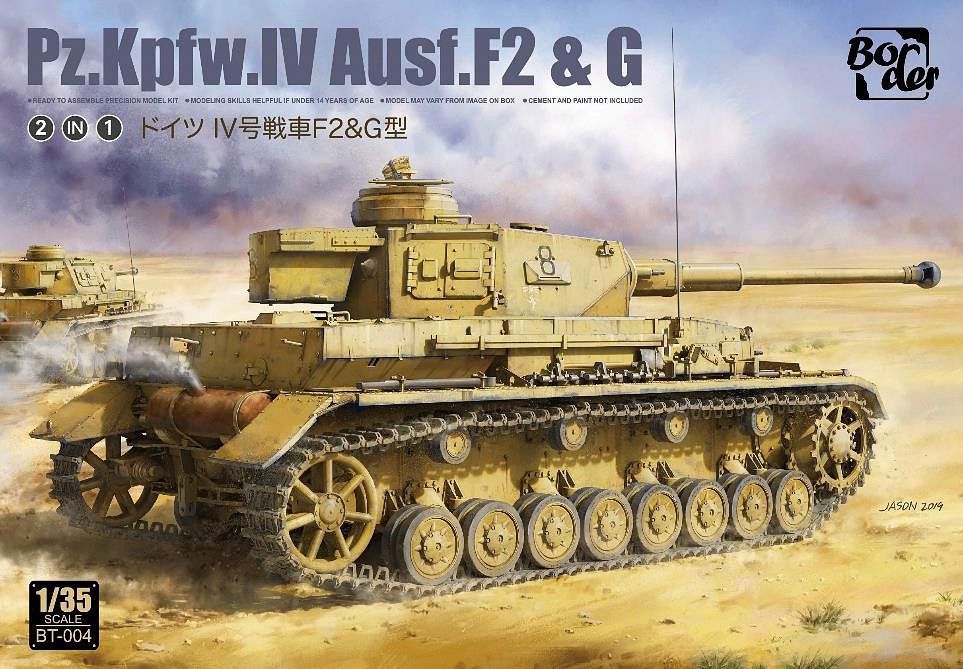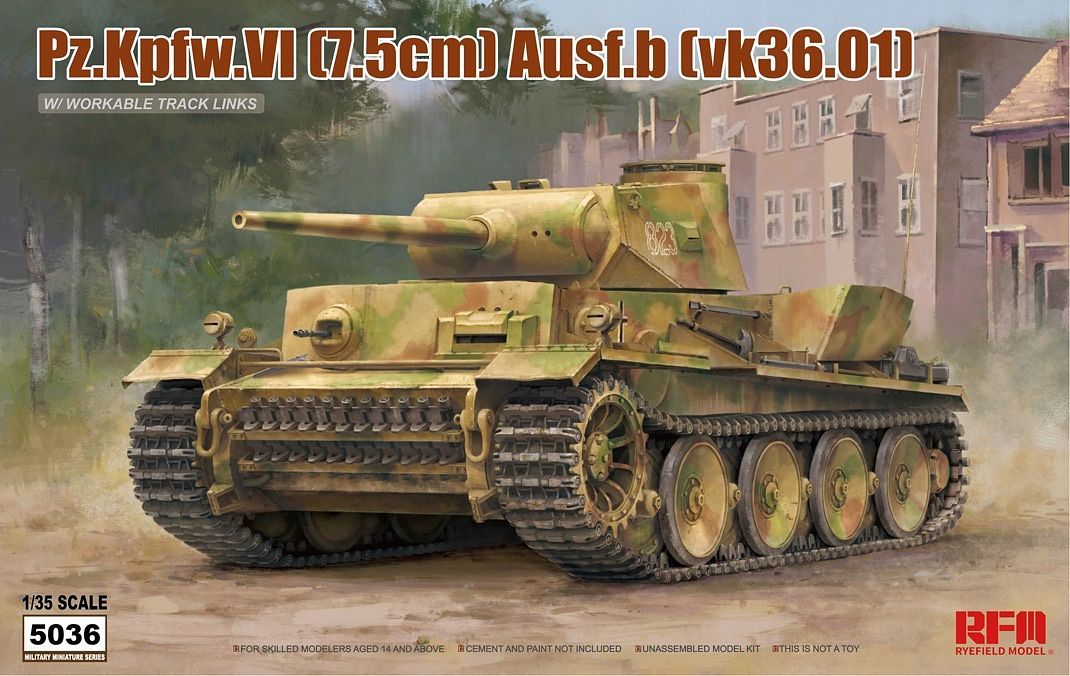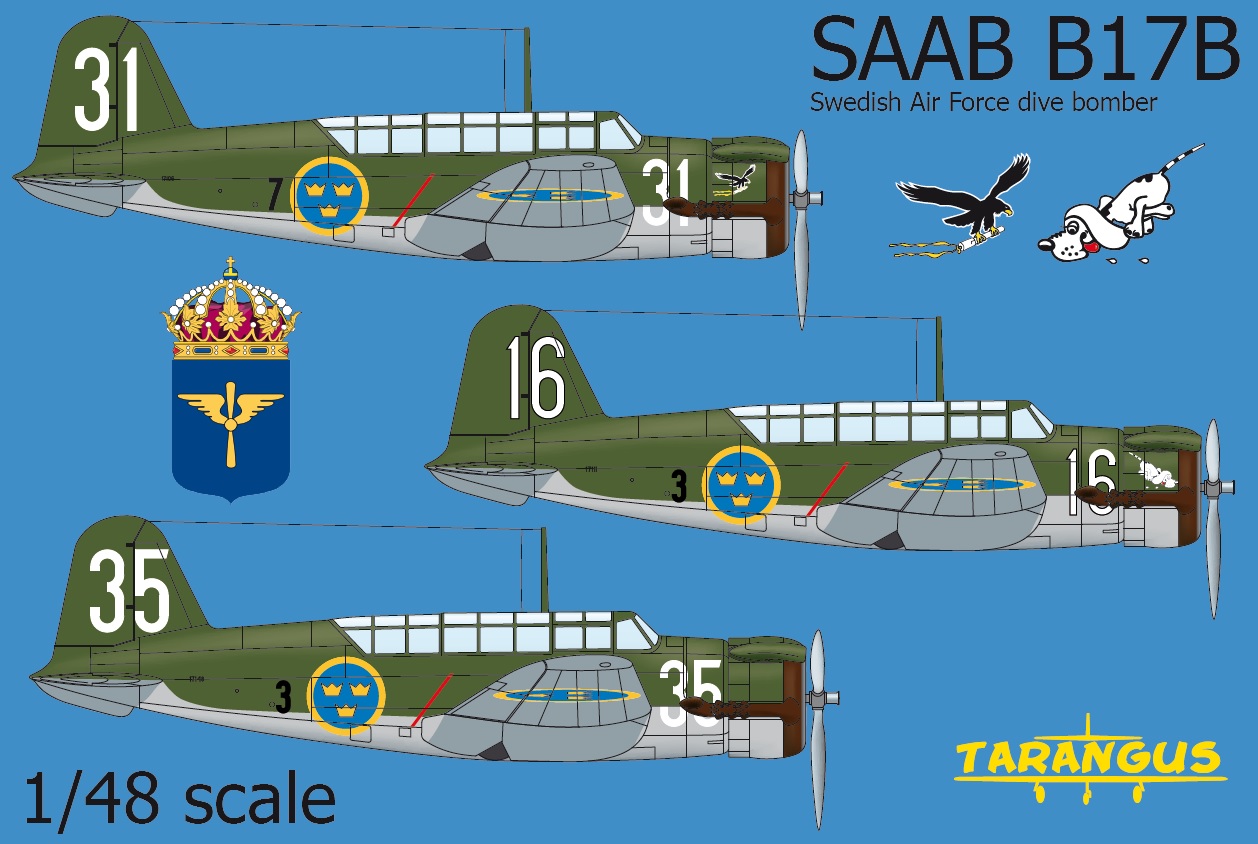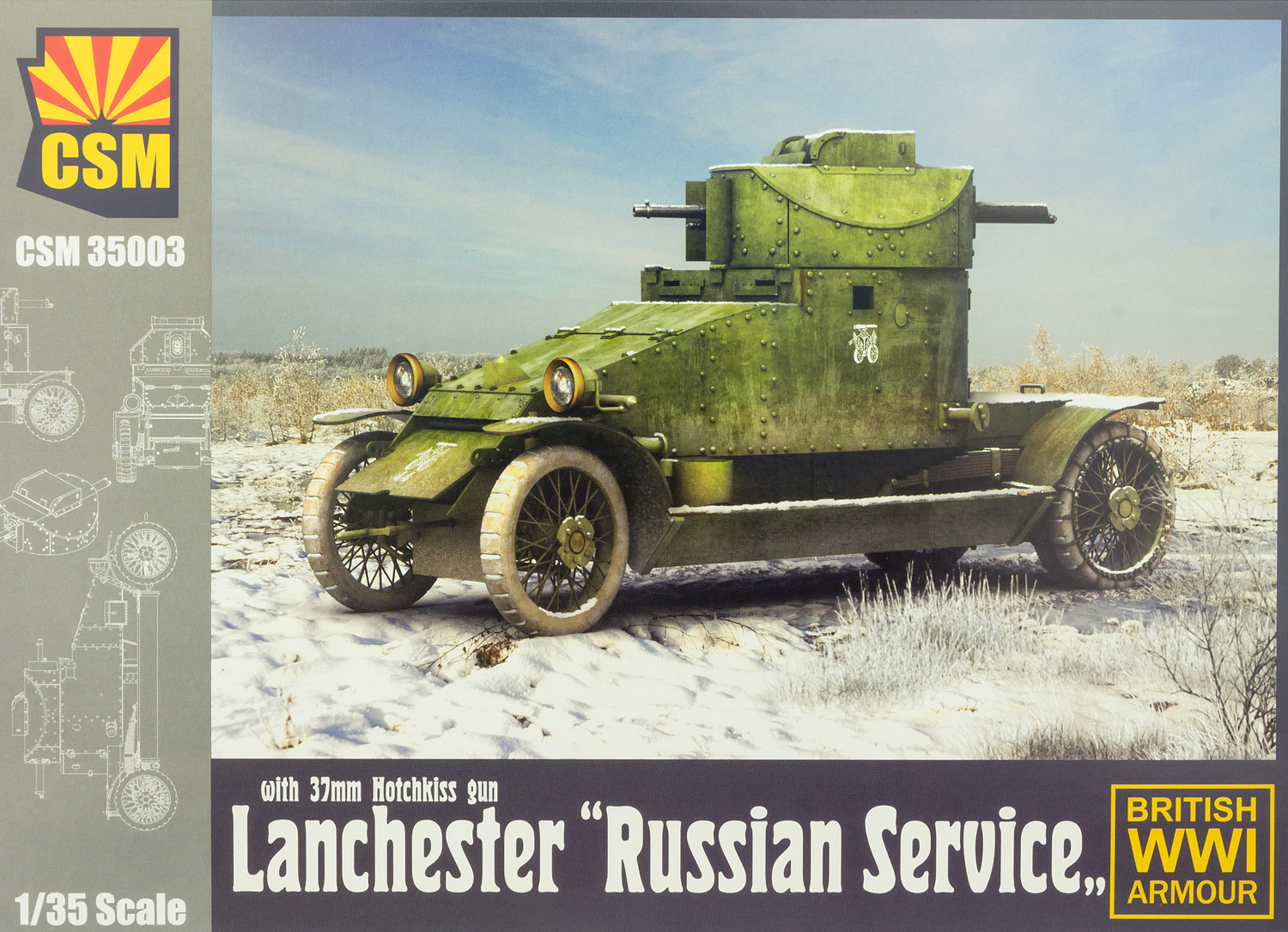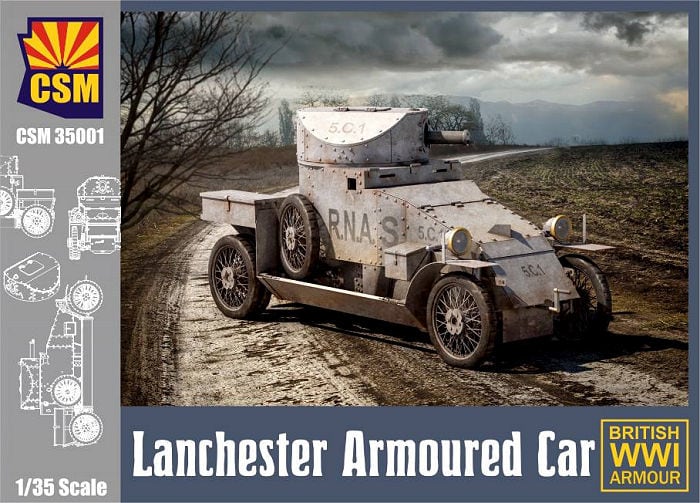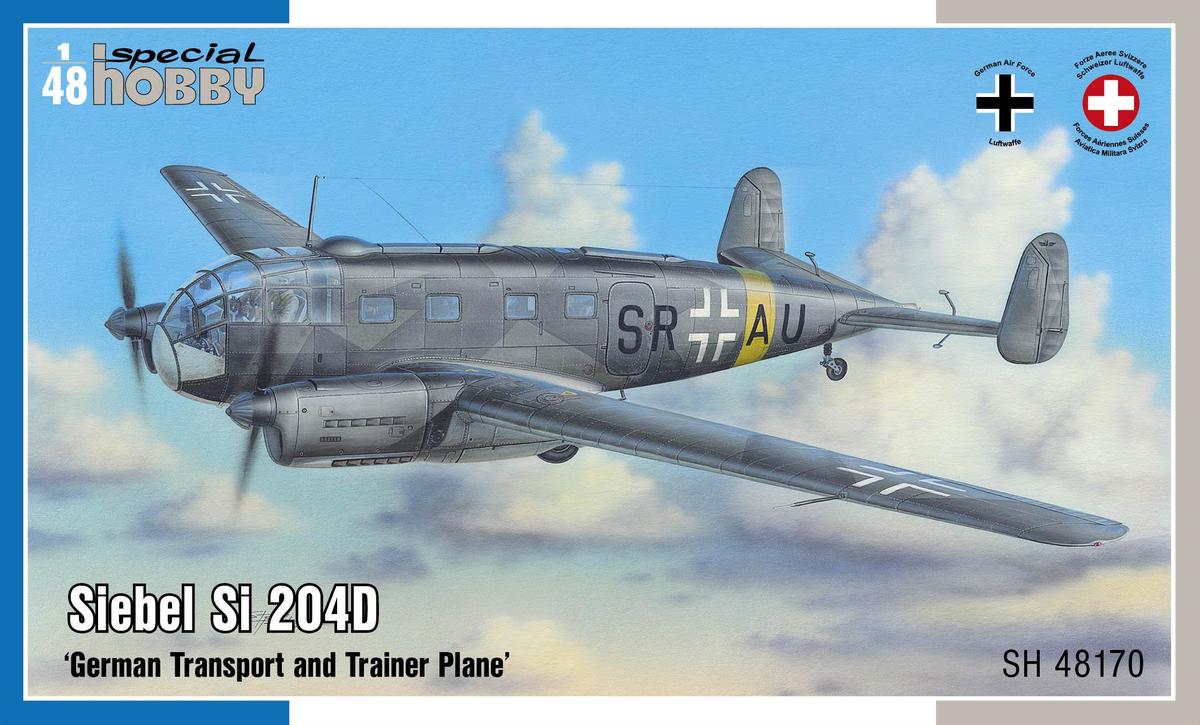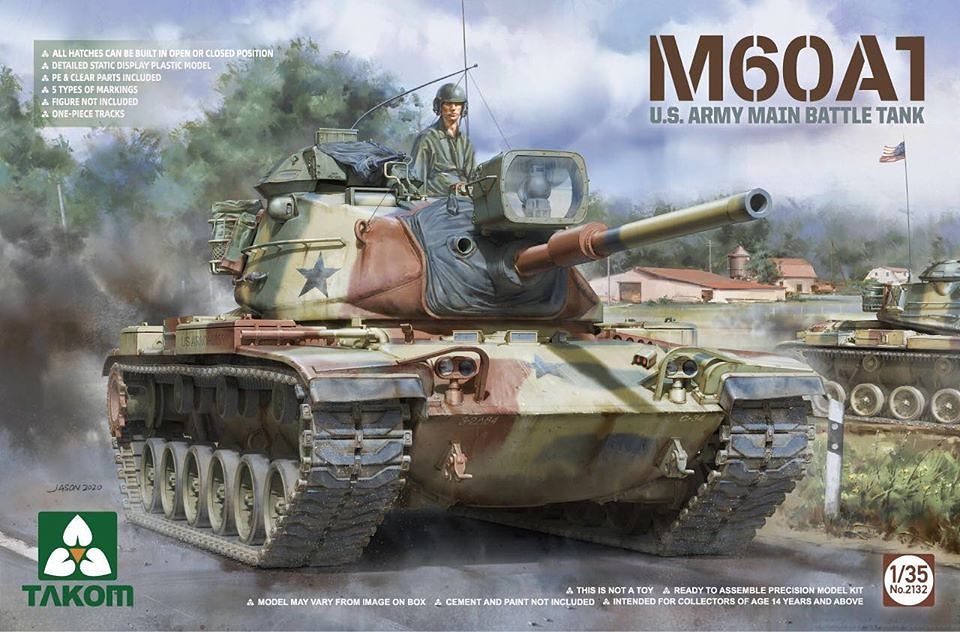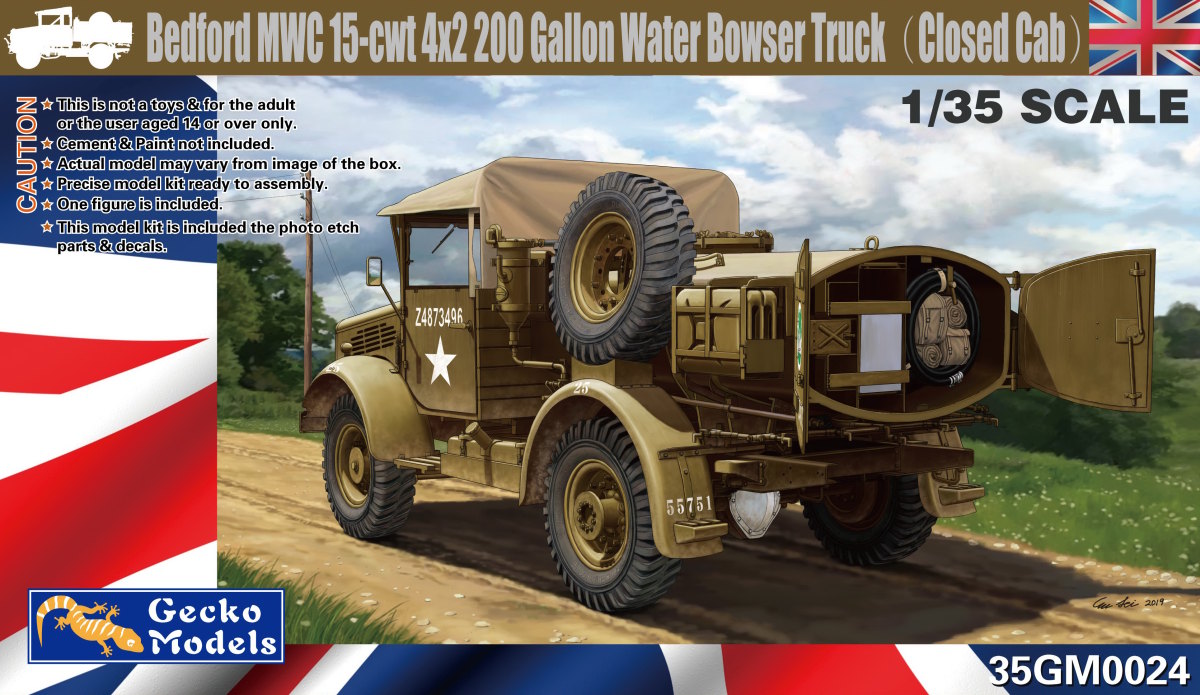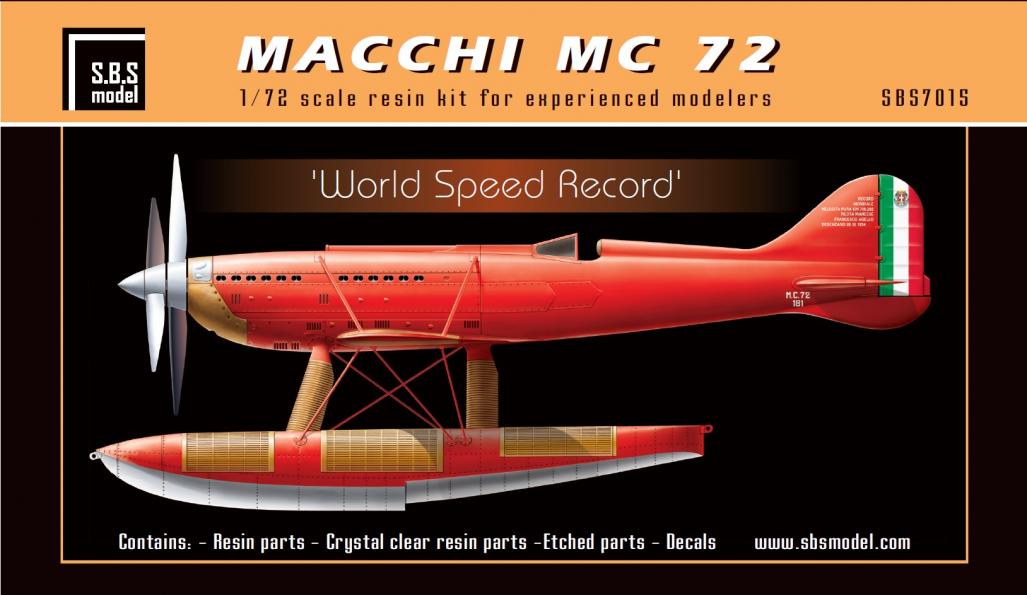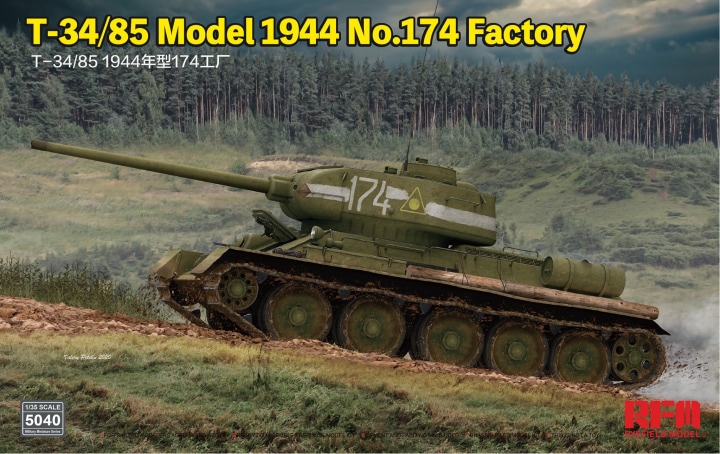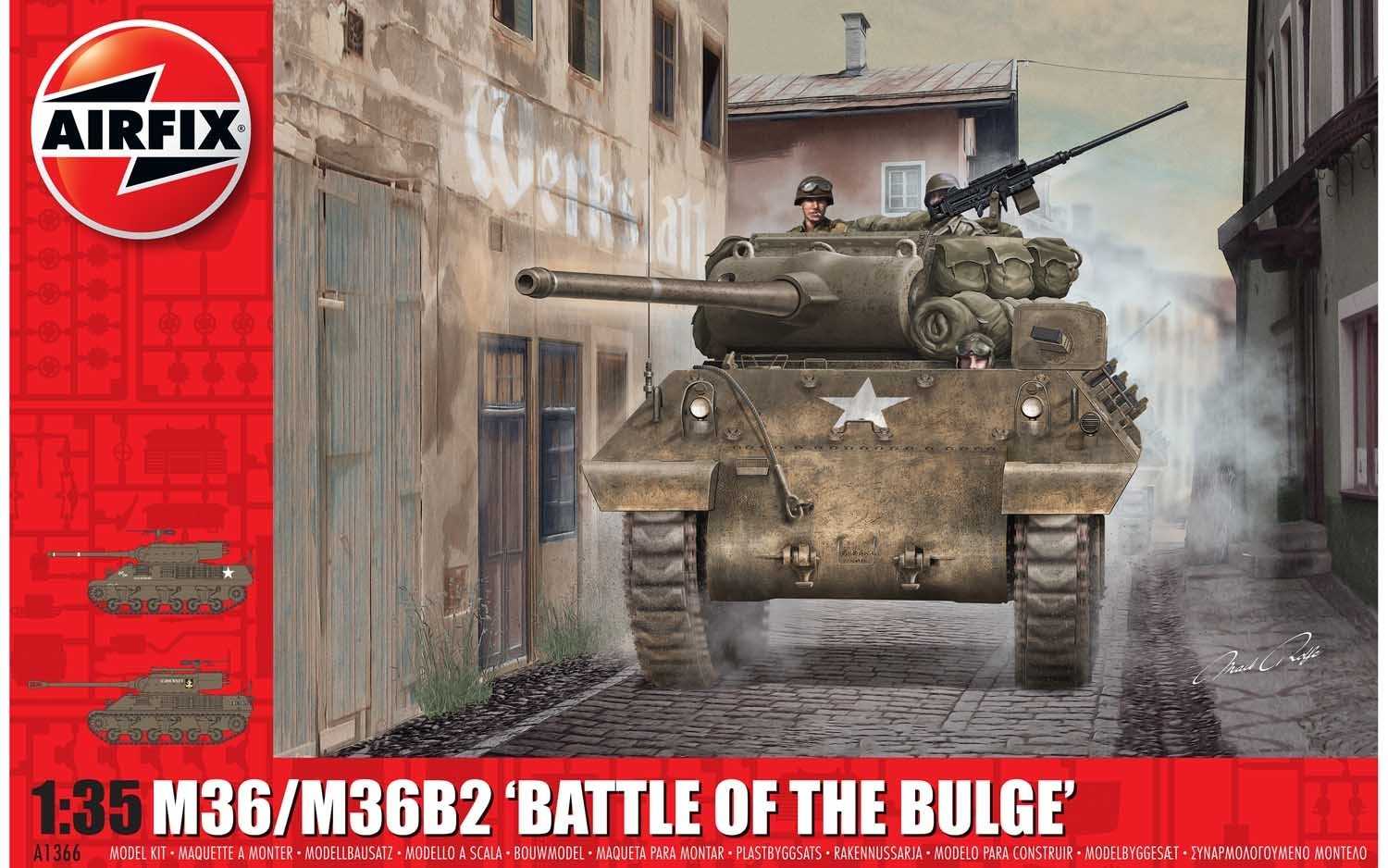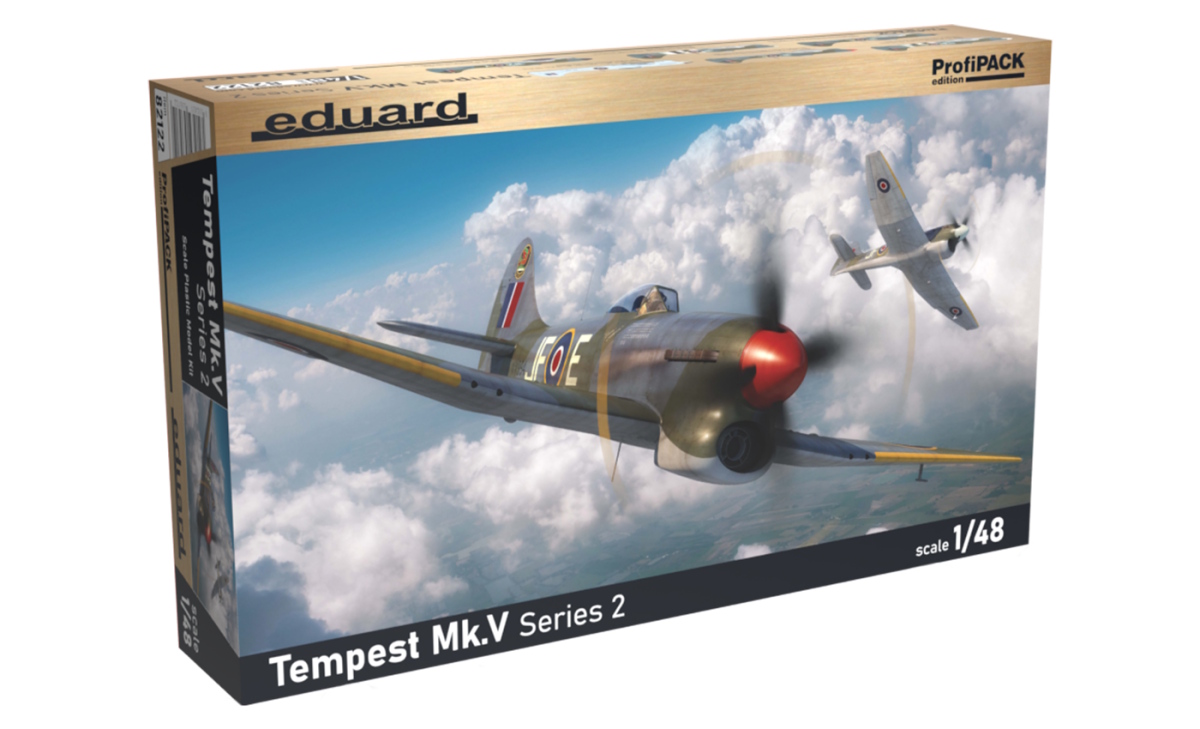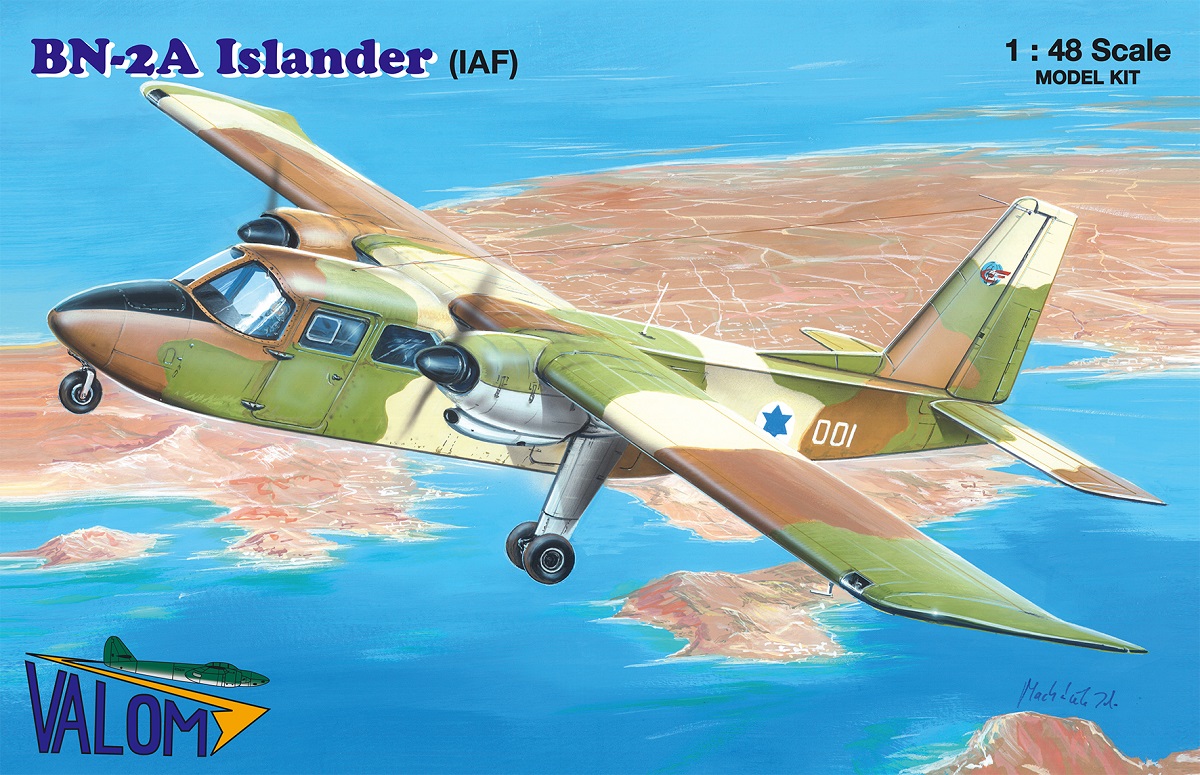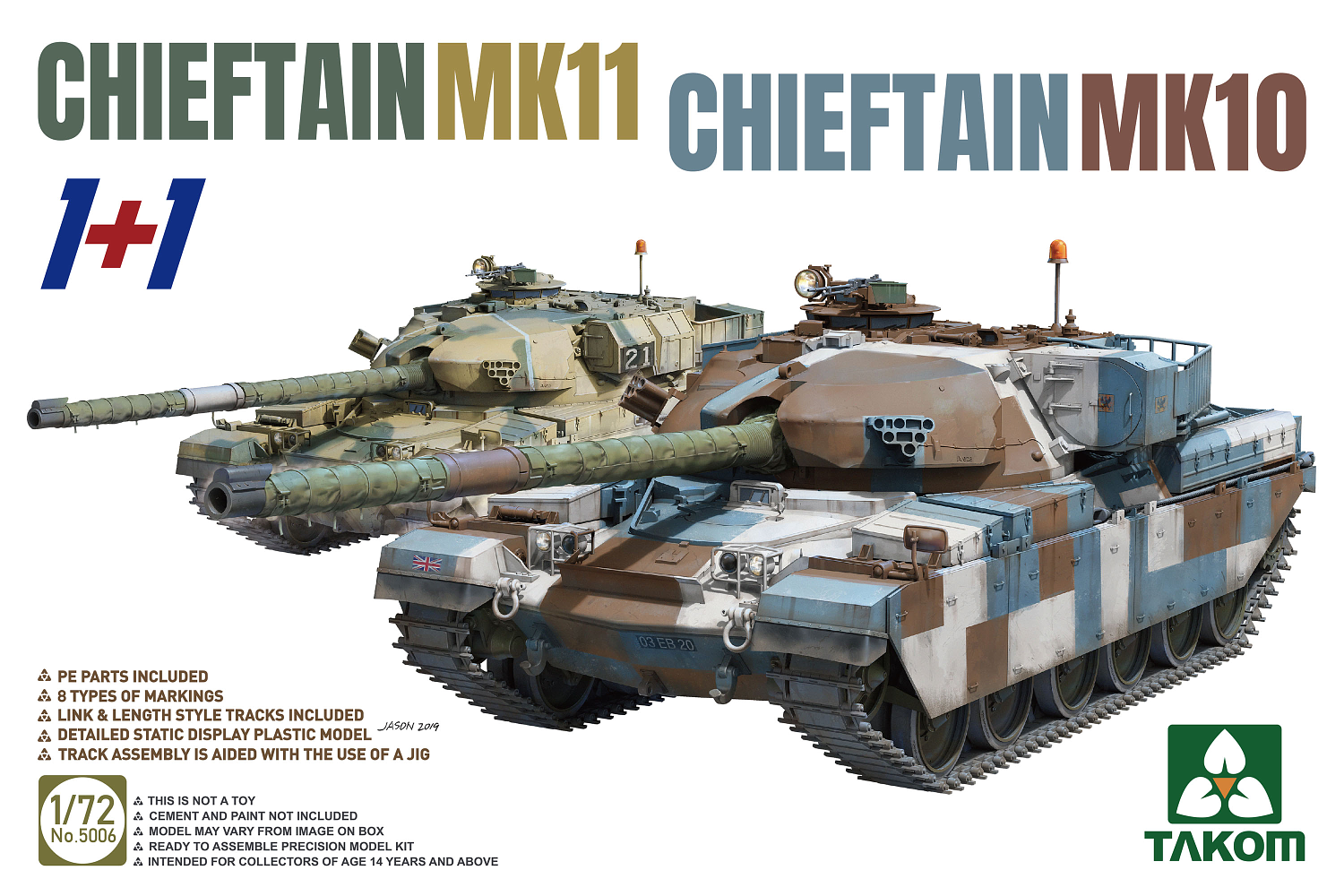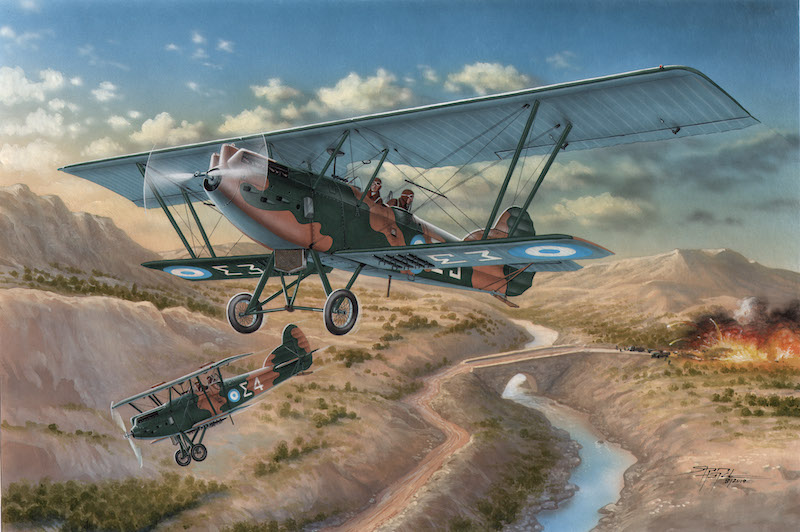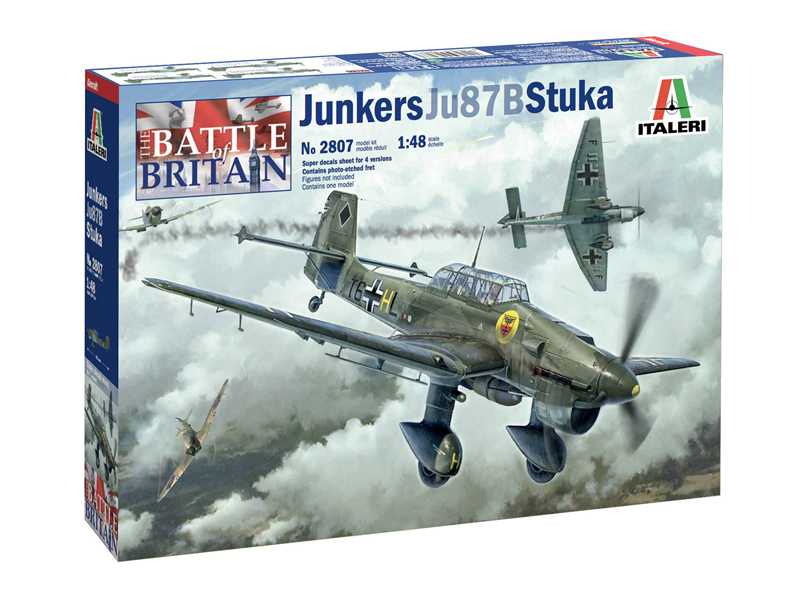Modely
Celkem 744 produktů
1/72 Bristol 170 Mk.21. The Bristol Type 170 Freighter was a British twin-engine aircraft designed and built by the Bristol Aeroplane Company as both a freighter and airliner. Its best known use was as an air ferry to carry cars and their passengers over relatively short distances. A passenger-only version was also produced, known as the Wayfarer. The Freighter was developed during the Second World War, having attracted official attention from the British Air Ministry, which sought the development of a rugged vehicle capable of carrying various cargoes, including a 3-ton truck. Various changes to the design were made to accommodate their requirements, but being completed too late to participate in the conflict, the majority of sales of the Freighter were to commercial operators. In response to customer demand, an enlarged version to maximise vehicle-carrying capacity, known as the Bristol Superfreighter, was developed.
1/35 Pz.Kpfw.Iv Ausf.J Late W/Workable Track Links. This is an injection-plastic military vehicle model kit. This kit features 2 types of drive sprockets, 5 types of return rollers, and 3 types of retractors in addition to the workable links. A metal barrel, photo-etched parts and decals for 6 versions are also included, as are many accessories! Order yours today! [Includes]: Photo-etched parts, decals for 6 versions, metal gun barrel
Plastikový model tanku 1/35 Panzer IV Ausf. F2 & G - Border Model. This is an injection-plastic military vehicle model kit.This kit from Border Models can be assembled as either the Pz.Kpfw.IV F2 or G type tank! This kit was designed with ease of assembly in mind; photo-etched parts and a metal gun barrel are included, as are various accessories.
1/35 Pz.Kpfw.Iv Ausf.J Late W/Workable Track Links. This is an injection-plastic military vehicle model kit. This kit features 2 types of drive sprockets, 5 types of return rollers, and 3 types of retractors in addition to the workable links. A metal barrel, photo-etched parts and decals for 6 versions are also included, as are many accessories! Order yours today! [Includes]: Photo-etched parts, decals for 6 versions, metal gun barrel
Plastikový model tanku 1/35 Panzer IV Ausf. F2 & G - Border Model. This is an injection-plastic military vehicle model kit.This kit from Border Models can be assembled as either the Pz.Kpfw.IV F2 or G type tank! This kit was designed with ease of assembly in mind; photo-etched parts and a metal gun barrel are included, as are various accessories.
1/35 Panzer VI Ausf. B (VK36.01). This is an injection-plastic military vehicle model kit.This kit of the Pz.Kpfw.VI (7.5cm) Ausft.B (VK36.01) features workable track links, photo-etched parts, and decals for three versions; hatches can be built open or closed.[Includes]: Photo-etched parts, decals for 3 versions
1/35 Bergepanzer Tiger I. This is an injection-plastic military vehicle model kit. Rye Field Model presents a 1/35 scale kit of the U.S. main battle tank: M1A2 SEP Abrams TUSK! This two-in-one kit can be built with either the TUSK I or TUSK II specifications, and features a full interior for plenty of detail to enjoy inside and out. It features a link and length type crawler belt, and comes with 830 parts, 85 photo-etched parts, and decals for multiple marking options. Grab it today! [Mold Color]: Tan [Includes]: Photo-etched parts, decals
1/35 Sturmtiger Rm61 L/5.4/38cm W/Workable Track Links. This is an injection-plastic military vehicle model kit. The Sturmtiger was a self-propelled artillery developed by Germany in World War II. This tank remodeled the chassis of the Tiger I, and it was equipped with a 38cm rocket mortar originally developed for the German Navy. Only 18 of this tank were produced. Interior parts are limited to parts inside the battle room; parts such as the engine, radiator fan, and transmission are not included. The track links are movable, and photo-etched parts are included, as are decals for 3 markings versions. [Includes]: Photo-etched parts, decals for 3 versions
1/35 Bergepanzer Tiger I. This is an injection-plastic military vehicle model kit. Rye Field Model presents a 1/35 scale kit of the U.S. main battle tank: M1A2 SEP Abrams TUSK! This two-in-one kit can be built with either the TUSK I or TUSK II specifications, and features a full interior for plenty of detail to enjoy inside and out. It features a link and length type crawler belt, and comes with 830 parts, 85 photo-etched parts, and decals for multiple marking options. Grab it today! [Mold Color]: Tan [Includes]: Photo-etched parts, decals
1/35 Panzer VI Ausf. B (VK36.01). This is an injection-plastic military vehicle model kit.This kit of the Pz.Kpfw.VI (7.5cm) Ausft.B (VK36.01) features workable track links, photo-etched parts, and decals for three versions; hatches can be built open or closed.[Includes]: Photo-etched parts, decals for 3 versions
1/35 Panzer IV Ausf. H early. Rye Field Model brings us the definitive model kit of the IV Tank H Type! This was the final development of the IV tank. Production began in April 1943, and by July 1944, 3,774 vehicles were produced -- the highest number in the IV series.The crawler tracks are assembled and movable; the Maybach HL120TRM engine is precisely reproduced around the breech. The suspension is movable too, and the starter wheels, guide wheels, and rolling wheels can all rotate after assembly thanks to polycaps. Photo-etched parts are included for Schulzen and additional anti-aircraft armor, as are decals for three versions. [Includes]: Photo-etched parts, decals for 3 versions
1/35 Sturmtiger Rm61 L/5.4/38cm W/Workable Track Links. This is an injection-plastic military vehicle model kit. The Sturmtiger was a self-propelled artillery developed by Germany in World War II. This tank remodeled the chassis of the Tiger I, and it was equipped with a 38cm rocket mortar originally developed for the German Navy. Only 18 of this tank were produced. Interior parts are limited to parts inside the battle room; parts such as the engine, radiator fan, and transmission are not included. The track links are movable, and photo-etched parts are included, as are decals for 3 markings versions. [Includes]: Photo-etched parts, decals for 3 versions
1/35 Panzer IV Ausf. H early. Rye Field Model brings us the definitive model kit of the IV Tank H Type! This was the final development of the IV tank. Production began in April 1943, and by July 1944, 3,774 vehicles were produced -- the highest number in the IV series.The crawler tracks are assembled and movable; the Maybach HL120TRM engine is precisely reproduced around the breech. The suspension is movable too, and the starter wheels, guide wheels, and rolling wheels can all rotate after assembly thanks to polycaps. Photo-etched parts are included for Schulzen and additional anti-aircraft armor, as are decals for three versions. [Includes]: Photo-etched parts, decals for 3 versions
1/48 SAAB B17B - The first SAAB aircraft. The first SAAB designed and built aircraft was initially an ASJA (SAAB’s predecessor) project called the L-10, a reconnaissance aircraft. When ASJA was merged with SAAB, the airplane was named SAAB 17. It was now also intended as a dive bomber. As the European continent was thrown into war, the lack of engines forced three different versions of the SAAB 17 to be developed; the 17A with Pratt & Whitney Twin Wasp, the 17B with Bristol Mercury XXIV and the 17C with Piaggio P. XIbis R.C.40D. The first prototype flew on May 18 1940 and two years later deliveries commenced.
1/48 SAAB B17B - The first SAAB aircraft. The first SAAB designed and built aircraft was initially an ASJA (SAAB’s predecessor) project called the L-10, a reconnaissance aircraft. When ASJA was merged with SAAB, the airplane was named SAAB 17. It was now also intended as a dive bomber. As the European continent was thrown into war, the lack of engines forced three different versions of the SAAB 17 to be developed; the 17A with Pratt & Whitney Twin Wasp, the 17B with Bristol Mercury XXIV and the 17C with Piaggio P. XIbis R.C.40D. The first prototype flew on May 18 1940 and two years later deliveries commenced.
Plastikový model letadla 1/48 Siebel Si 204D 'German Transport and Trainer Plane'. Model of the German twin-engined trainer and transport aircraft portrayed in the Si 204D variety Content of the model kit: eight sprues, one sprue with clear parts, full colour instructions, decal sheet featuring markings for two German and one Swiss machine. Superbly detailed model, dimension and shapewise accurate Finely engraved panel lines Complet pilot office and cargo compartment Large sheet of decals, printed by Italian Cartograf The type has never been kitted before, with the sole exception of a vacuumformed one Country of origin: Germany / WWII
Plastikový model letadla 1/48 Siebel Si 204D 'German Transport and Trainer Plane'. Model of the German twin-engined trainer and transport aircraft portrayed in the Si 204D variety Content of the model kit: eight sprues, one sprue with clear parts, full colour instructions, decal sheet featuring markings for two German and one Swiss machine. Superbly detailed model, dimension and shapewise accurate Finely engraved panel lines Complet pilot office and cargo compartment Large sheet of decals, printed by Italian Cartograf The type has never been kitted before, with the sole exception of a vacuumformed one Country of origin: Germany / WWII
1/35 M60A1 Patton U.S. Army Main Battle Tank. The M60 is a main battle tank developed by the United States as a successor to the M46, M47, and M48 in order to combat the new T-54A tank fielded by the Soviet Union. The M60A1 tank is an improved mass-produced version of the M60, with production beginning in 1960, four years after the prototype of the original M60 was completed. The turret was changed from the M60's "turtleshell" shape to a thicker shape with front armor and a wider internal volume. The tank's excellent maneuverability, powerful engine and 105mm tank gun L7A1 made it an excellent tank with a good balance of offense and defense; it has become the standard main battle tank for the U.S. military and other Western countries. About 20,000 of this tank have been made, and it has become the best-selling tank. Takom's kit features a main hatch that opens and closes after assembly, with crawler belt tracks, clear and photo-etched parts, and markings for five versions. Please note that figures are not included. [Includes]: Clear parts, photo-etched parts, markings for 5 versions
1/35 M60A1 Patton U.S. Army Main Battle Tank. The M60 is a main battle tank developed by the United States as a successor to the M46, M47, and M48 in order to combat the new T-54A tank fielded by the Soviet Union. The M60A1 tank is an improved mass-produced version of the M60, with production beginning in 1960, four years after the prototype of the original M60 was completed. The turret was changed from the M60's "turtleshell" shape to a thicker shape with front armor and a wider internal volume. The tank's excellent maneuverability, powerful engine and 105mm tank gun L7A1 made it an excellent tank with a good balance of offense and defense; it has become the standard main battle tank for the U.S. military and other Western countries. About 20,000 of this tank have been made, and it has become the best-selling tank. Takom's kit features a main hatch that opens and closes after assembly, with crawler belt tracks, clear and photo-etched parts, and markings for five versions. Please note that figures are not included. [Includes]: Clear parts, photo-etched parts, markings for 5 versions
1/35 Bedford MWC 15-cwt 4x2 200 Gallon Water Bowser Truck (Closed Cab). Gecko Models brings us a kit of the Closed Cab Bedford MWC. The Bedford MW was developed by Vauxhall in 1935 and produced in 1939 before World War II, and its intended use was mainly for the British Army Infantry battalions. Later developed to take on a number of roles and to be later utilized by different forces (such as the Royal Air Force, the Royal Navy, and others), this kit lets you replicate the Bedford MWC 15-cwt 4x2 200 Gallon Water Bowser Truck variation. When fully assembled this model features a front window, a half cabin door, and a water tank with an oval shaped cross section. [Includes]: Photo-etched parts, decal sheet x1, figure x1
Classic Kit vesmír A50106 - One Step for Man 50th Anniversary of 1st Manned Moon Landing (1:72). Model přistávacího modulu a astronautů ke slepení. Velikost: 1:72. Informace o modelu a originálu: 21. července 1969 – člověk poprvé vstupuje na povrch Měsíce. Američan Neil Armstrong se stal prvním člověkem, který se prošel po Měsíci. Na jeho povrch vstoupil ve 02.56 GMT v oblasti Moře klidu (Mare Tranquillitatis), necelých 20 minut po prvním otevření poklopu na přistávacím modulu Orel. Armstrong již ve 20.17 GMT předchozího dne ohlásil, že lunární modul bezpečně přistál, slovy: „Houstone, tady základna Tranquility. Orel přistál.“ V momentě, kdy došlápl levou nohou na povrch Měsíce, pronesl ikonická slova „Je to malý krok pro člověka, obrovský skok pro lidstvo,“ která ho údajně napadla sama od sebe, aniž by si je připravoval! Dále popsal povrch jako uhelný prach, v němž přistávací modul zanechal jenom malé prohlubně. Tyto historické okamžiky zachytily televizní kamery připevněné k modulu Orel, které zapnul sám Armstrong. Prvních několik minut poté strávil pořizováním fotografií a sbíráním vzorků půdy pro případ, že by musela být mise náhle přerušena. Jeho kolega Edwin 'Buzz' Aldrin se k němu připojil v 03.15 GMT a oba poté sbírali data a plnili různá cvičení – včetně skákání měsíční krajinou – než v 03.41 GMT zasadili do země vlajku Spojených států amerických. Kromě toho odhalili plaketu, na níž byl podpis prezidenta Nixona a nápis pravící: „Zde se lidé z planety Země poprvé dotkli nohama Měsíce. Červenec L. P. 1969. Přišli jsme v míru jménem všeho lidstva.“ Následující mise s sebou už přinesly modernější vybavení. Tato dárková sada umožňuje postavit celou řadu těchto misí až po tu poslední – Apollo 17 z prosince 1972. Detaily modelu: Měřítko: 1:72 Obtížnost: 2 Flying Hours: 2 Doporučeno pro děti od 8 let. Upozornění: Nebezpečí udušení! Výrobek obsahuje malé části. NEVHODNÉ PRO DĚTI DO 3 LET!
1/35 Bedford MWC 15-cwt 4x2 200 Gallon Water Bowser Truck (Closed Cab). Gecko Models brings us a kit of the Closed Cab Bedford MWC. The Bedford MW was developed by Vauxhall in 1935 and produced in 1939 before World War II, and its intended use was mainly for the British Army Infantry battalions. Later developed to take on a number of roles and to be later utilized by different forces (such as the Royal Air Force, the Royal Navy, and others), this kit lets you replicate the Bedford MWC 15-cwt 4x2 200 Gallon Water Bowser Truck variation. When fully assembled this model features a front window, a half cabin door, and a water tank with an oval shaped cross section. [Includes]: Photo-etched parts, decal sheet x1, figure x1
Classic Kit vesmír A50106 - One Step for Man 50th Anniversary of 1st Manned Moon Landing (1:72). Model přistávacího modulu a astronautů ke slepení. Velikost: 1:72. Informace o modelu a originálu: 21. července 1969 – člověk poprvé vstupuje na povrch Měsíce. Američan Neil Armstrong se stal prvním člověkem, který se prošel po Měsíci. Na jeho povrch vstoupil ve 02.56 GMT v oblasti Moře klidu (Mare Tranquillitatis), necelých 20 minut po prvním otevření poklopu na přistávacím modulu Orel. Armstrong již ve 20.17 GMT předchozího dne ohlásil, že lunární modul bezpečně přistál, slovy: „Houstone, tady základna Tranquility. Orel přistál.“ V momentě, kdy došlápl levou nohou na povrch Měsíce, pronesl ikonická slova „Je to malý krok pro člověka, obrovský skok pro lidstvo,“ která ho údajně napadla sama od sebe, aniž by si je připravoval! Dále popsal povrch jako uhelný prach, v němž přistávací modul zanechal jenom malé prohlubně. Tyto historické okamžiky zachytily televizní kamery připevněné k modulu Orel, které zapnul sám Armstrong. Prvních několik minut poté strávil pořizováním fotografií a sbíráním vzorků půdy pro případ, že by musela být mise náhle přerušena. Jeho kolega Edwin 'Buzz' Aldrin se k němu připojil v 03.15 GMT a oba poté sbírali data a plnili různá cvičení – včetně skákání měsíční krajinou – než v 03.41 GMT zasadili do země vlajku Spojených států amerických. Kromě toho odhalili plaketu, na níž byl podpis prezidenta Nixona a nápis pravící: „Zde se lidé z planety Země poprvé dotkli nohama Měsíce. Červenec L. P. 1969. Přišli jsme v míru jménem všeho lidstva.“ Následující mise s sebou už přinesly modernější vybavení. Tato dárková sada umožňuje postavit celou řadu těchto misí až po tu poslední – Apollo 17 z prosince 1972. Detaily modelu: Měřítko: 1:72 Obtížnost: 2 Flying Hours: 2 Doporučeno pro děti od 8 let. Upozornění: Nebezpečí udušení! Výrobek obsahuje malé části. NEVHODNÉ PRO DĚTI DO 3 LET!
1/35 T-34/85 Model 1944 No.174 Factory. The T-34 is a medium tank used mainly in the Soviet Union and members of the former Warsaw Pact during the Cold War. The T-34/85 is equipped with an 85mm tank gun in a large three-person turret, and generally the type equipped with the S-53 tank gun is classified as the 1944 type. Compared to the 1943 type, the 1944 type has a simplified design of the base of the main gun due to miniaturization of the retreat mechanism; the antenna is also installed in front of the cupola due to the relocation of the radio, and the ventilator above the turret features two units to improve the exhaust capacity. The 1944 model was mainly produced at the 183rd Factory, and in June of 1944, production started at the 174th Factory in Omsk, southern Russia. This kit from Rye Field Models includes photo-etched parts and decals for four versions. [Includes]: Photo-etched parts, decals for 4 versions
1/35 T-34/85 Model 1944 No.174 Factory. The T-34 is a medium tank used mainly in the Soviet Union and members of the former Warsaw Pact during the Cold War. The T-34/85 is equipped with an 85mm tank gun in a large three-person turret, and generally the type equipped with the S-53 tank gun is classified as the 1944 type. Compared to the 1943 type, the 1944 type has a simplified design of the base of the main gun due to miniaturization of the retreat mechanism; the antenna is also installed in front of the cupola due to the relocation of the radio, and the ventilator above the turret features two units to improve the exhaust capacity. The 1944 model was mainly produced at the 183rd Factory, and in June of 1944, production started at the 174th Factory in Omsk, southern Russia. This kit from Rye Field Models includes photo-etched parts and decals for four versions. [Includes]: Photo-etched parts, decals for 4 versions
Classic Kit tank A1366 - M36/M36B2 "Battle of the Bulge" (1:35). Model tanku ke slepení. Velikost: 1:35; 21,3 cm. Informace o modelu: Stíhač tanků M36 byl navržen, aby nahradil model M10, který byl osazen pouze 76mm dělem. Nový stroj měl 90mm kanón s lepší schopností prorazit pancíř nepřátelských vozidel. Během bitvy v Ardenách v prosinci 1944 se díky němu dokázal postavit i Tigerům a Pantherům Wehrmachtu. M36 se skládal z nové věže posazené na upravenou korbu M10A1. M36B2 pak používal stejnou věž, ale posazenou na korbě M4A2 s naftovým motorem. Obě verze zůstaly ve službě velmi dlouho, především pak v ozbrojených jednotkách jiných zemí. Detaily modelu: Měřítko: 1:35 Délka: 213 mm Šířka: 87 mm Obtížnost: 3 Body Flying Hours: 3 Doporučeno pro děti od 14 let. Upozornění: Nebezpečí udušení! Výrobek obsahuje malé části. NEVHODNÉ PRO DĚTI DO 3 LET!
Classic Kit tank A1366 - M36/M36B2 "Battle of the Bulge" (1:35). Model tanku ke slepení. Velikost: 1:35; 21,3 cm. Informace o modelu: Stíhač tanků M36 byl navržen, aby nahradil model M10, který byl osazen pouze 76mm dělem. Nový stroj měl 90mm kanón s lepší schopností prorazit pancíř nepřátelských vozidel. Během bitvy v Ardenách v prosinci 1944 se díky němu dokázal postavit i Tigerům a Pantherům Wehrmachtu. M36 se skládal z nové věže posazené na upravenou korbu M10A1. M36B2 pak používal stejnou věž, ale posazenou na korbě M4A2 s naftovým motorem. Obě verze zůstaly ve službě velmi dlouho, především pak v ozbrojených jednotkách jiných zemí. Detaily modelu: Měřítko: 1:35 Délka: 213 mm Šířka: 87 mm Obtížnost: 3 Body Flying Hours: 3 Doporučeno pro děti od 14 let. Upozornění: Nebezpečí udušení! Výrobek obsahuje malé části. NEVHODNÉ PRO DĚTI DO 3 LET!
1/72 KDA-2 type 88-2 scout. The Beriev Be-8 (USAF/DoD reporting name “Type 33”, NATO reporting name “Mole”), was built by the Soviet Beriev OKB in 1947. It was a passenger/liaison amphibian aircraft with a layout similar to the Be-4 but substantially larger and heavier. It was a single engine parasol with the wing installed on a thin pylon and a pair of short struts. Compared to the Be-4, the Be-8 was equipped with retractable landing gear, and pilot and passenger cabins had heating utilizing engine heat. The Be-8 was intended as a civil aircraft and carried no armament. First flight was on December 3, demonstrating good performance. Two experimental aircraft were built, and one was demonstrated during 1951 Soviet Aviation Day at Tushino.One of Be-8 was equipped with hydrofoils, developed at TsAGI. These “Underwater Wings” were installed on landing gear struts and pushed aircraft above the water well before it could be done by the wing lift force. As a result, takeoff was much easier and imposed less punishment on the hull from the waves. Despite very effective during takeoff hydrofoils had negative impact on flight speed. Construction of retractable hydrofoils was not ready, and the concept did not find practical applications.
1/72 KDA-2 type 88 light bomber. The Beriev Be-8 (USAF/DoD reporting name “Type 33”, NATO reporting name “Mole”), was built by the Soviet Beriev OKB in 1947. It was a passenger/liaison amphibian aircraft with a layout similar to the Be-4 but substantially larger and heavier. It was a single engine parasol with the wing installed on a thin pylon and a pair of short struts. Compared to the Be-4, the Be-8 was equipped with retractable landing gear, and pilot and passenger cabins had heating utilizing engine heat. The Be-8 was intended as a civil aircraft and carried no armament. First flight was on December 3, demonstrating good performance. Two experimental aircraft were built, and one was demonstrated during 1951 Soviet Aviation Day at Tushino.One of Be-8 was equipped with hydrofoils, developed at TsAGI. These “Underwater Wings” were installed on landing gear struts and pushed aircraft above the water well before it could be done by the wing lift force. As a result, takeoff was much easier and imposed less punishment on the hull from the waves. Despite very effective during takeoff hydrofoils had negative impact on flight speed. Construction of retractable hydrofoils was not ready, and the concept did not find practical applications.
1/72 KDA-2 type 88-1 scout. The Beriev Be-8 (USAF/DoD reporting name “Type 33”, NATO reporting name “Mole”), was built by the Soviet Beriev OKB in 1947. It was a passenger/liaison amphibian aircraft with a layout similar to the Be-4 but substantially larger and heavier. It was a single engine parasol with the wing installed on a thin pylon and a pair of short struts. Compared to the Be-4, the Be-8 was equipped with retractable landing gear, and pilot and passenger cabins had heating utilizing engine heat. The Be-8 was intended as a civil aircraft and carried no armament. First flight was on December 3, demonstrating good performance. Two experimental aircraft were built, and one was demonstrated during 1951 Soviet Aviation Day at Tushino.One of Be-8 was equipped with hydrofoils, developed at TsAGI. These “Underwater Wings” were installed on landing gear struts and pushed aircraft above the water well before it could be done by the wing lift force. As a result, takeoff was much easier and imposed less punishment on the hull from the waves. Despite very effective during takeoff hydrofoils had negative impact on flight speed. Construction of retractable hydrofoils was not ready, and the concept did not find practical applications.
1/72 KDA-2 type 88 light bomber. The Beriev Be-8 (USAF/DoD reporting name “Type 33”, NATO reporting name “Mole”), was built by the Soviet Beriev OKB in 1947. It was a passenger/liaison amphibian aircraft with a layout similar to the Be-4 but substantially larger and heavier. It was a single engine parasol with the wing installed on a thin pylon and a pair of short struts. Compared to the Be-4, the Be-8 was equipped with retractable landing gear, and pilot and passenger cabins had heating utilizing engine heat. The Be-8 was intended as a civil aircraft and carried no armament. First flight was on December 3, demonstrating good performance. Two experimental aircraft were built, and one was demonstrated during 1951 Soviet Aviation Day at Tushino.One of Be-8 was equipped with hydrofoils, developed at TsAGI. These “Underwater Wings” were installed on landing gear struts and pushed aircraft above the water well before it could be done by the wing lift force. As a result, takeoff was much easier and imposed less punishment on the hull from the waves. Despite very effective during takeoff hydrofoils had negative impact on flight speed. Construction of retractable hydrofoils was not ready, and the concept did not find practical applications.
1/72 KDA-2 type 88-1 scout. The Beriev Be-8 (USAF/DoD reporting name “Type 33”, NATO reporting name “Mole”), was built by the Soviet Beriev OKB in 1947. It was a passenger/liaison amphibian aircraft with a layout similar to the Be-4 but substantially larger and heavier. It was a single engine parasol with the wing installed on a thin pylon and a pair of short struts. Compared to the Be-4, the Be-8 was equipped with retractable landing gear, and pilot and passenger cabins had heating utilizing engine heat. The Be-8 was intended as a civil aircraft and carried no armament. First flight was on December 3, demonstrating good performance. Two experimental aircraft were built, and one was demonstrated during 1951 Soviet Aviation Day at Tushino.One of Be-8 was equipped with hydrofoils, developed at TsAGI. These “Underwater Wings” were installed on landing gear struts and pushed aircraft above the water well before it could be done by the wing lift force. As a result, takeoff was much easier and imposed less punishment on the hull from the waves. Despite very effective during takeoff hydrofoils had negative impact on flight speed. Construction of retractable hydrofoils was not ready, and the concept did not find practical applications.
1/72 KDA-2 type 88-2 scout. The Beriev Be-8 (USAF/DoD reporting name “Type 33”, NATO reporting name “Mole”), was built by the Soviet Beriev OKB in 1947. It was a passenger/liaison amphibian aircraft with a layout similar to the Be-4 but substantially larger and heavier. It was a single engine parasol with the wing installed on a thin pylon and a pair of short struts. Compared to the Be-4, the Be-8 was equipped with retractable landing gear, and pilot and passenger cabins had heating utilizing engine heat. The Be-8 was intended as a civil aircraft and carried no armament. First flight was on December 3, demonstrating good performance. Two experimental aircraft were built, and one was demonstrated during 1951 Soviet Aviation Day at Tushino.One of Be-8 was equipped with hydrofoils, developed at TsAGI. These “Underwater Wings” were installed on landing gear struts and pushed aircraft above the water well before it could be done by the wing lift force. As a result, takeoff was much easier and imposed less punishment on the hull from the waves. Despite very effective during takeoff hydrofoils had negative impact on flight speed. Construction of retractable hydrofoils was not ready, and the concept did not find practical applications.
1/48 Britten-Norman BN-2A Islander (IAF). This is an injection-plastic aircraft model kit. This beautifully detailed kit of the Britten-Norman BN-2A Islander is an entirely new mold! The prototype of this general-purpose aircraft made its first flight in 1965, and it is used by more than 500 airlines in more than 120 countries; it is still being produced (with some changes to the engine) after more than 50 years! This particular aircraft was used by more than 10 airlines, including New Japan Airlines, Daiichi Aviation, and Ryukyu Air Commuter in Japan. Includes photo-etched parts and decals for 2 versions; will be about 22.6cm long with a wingspan of 31.1cm when completed. [Mold Color]: Brown, clear [Includes]: Decals, photo-etched parts
1/48 Britten-Norman BN-2/BN-2A Islander. This is an injection-plastic aircraft model kit. This beautifully detailed kit of the Britten-Norman BN-2A Islander is an entirely new mold! The prototype of this general-purpose aircraft made its first flight in 1965, and it is used by more than 500 airlines in more than 120 countries; it is still being produced (with some changes to the engine) after more than 50 years! This particular aircraft was used by more than 10 airlines, including New Japan Airlines, Daiichi Aviation, and Ryukyu Air Commuter in Japan. Includes photo-etched parts and decals for 2 versions; will be about 22.6cm long with a wingspan of 31.1cm when completed. [Mold Color]: Brown, clear [Includes]: Decals, photo-etched parts
1/48 Britten-Norman BN-2A Islander (IAF). This is an injection-plastic aircraft model kit. This beautifully detailed kit of the Britten-Norman BN-2A Islander is an entirely new mold! The prototype of this general-purpose aircraft made its first flight in 1965, and it is used by more than 500 airlines in more than 120 countries; it is still being produced (with some changes to the engine) after more than 50 years! This particular aircraft was used by more than 10 airlines, including New Japan Airlines, Daiichi Aviation, and Ryukyu Air Commuter in Japan. Includes photo-etched parts and decals for 2 versions; will be about 22.6cm long with a wingspan of 31.1cm when completed. [Mold Color]: Brown, clear [Includes]: Decals, photo-etched parts
1/48 Britten-Norman BN-2/BN-2A Islander. This is an injection-plastic aircraft model kit. This beautifully detailed kit of the Britten-Norman BN-2A Islander is an entirely new mold! The prototype of this general-purpose aircraft made its first flight in 1965, and it is used by more than 500 airlines in more than 120 countries; it is still being produced (with some changes to the engine) after more than 50 years! This particular aircraft was used by more than 10 airlines, including New Japan Airlines, Daiichi Aviation, and Ryukyu Air Commuter in Japan. Includes photo-etched parts and decals for 2 versions; will be about 22.6cm long with a wingspan of 31.1cm when completed. [Mold Color]: Brown, clear [Includes]: Decals, photo-etched parts
1/72 Chieftain Mk.10 + Mk.11 Combo. This is an injection-plastic military vehicle model kit.The Chieftain is a second-generation main battle tank developed in the United Kingdom after World War II. Development began in the 1950s with the goal of integrating the main tank, the Centurion, and is supporting heavy tank, the Conqueror. Mass production began in May 1963. Because the British Army was skeptical of the idea of improving mobility at the expense of armor defense, the Chieftain adopted heavy armor for occupant protection and the new L11 120mm tank gun as its main armament. The main gun was powerful enough to destroy Soviet-made tanks such as the T-55 and T-62 at a distance of up to 4,000 meters.This new kit from Takom features photo-etched parts and decals for 6 versions; link-and-length tracks and assembly jig are also included. Order yours today![Includes]: Photo-etched parts, decals for 6 versions
1/72 Chieftain Mk.10 + Mk.11 Combo. This is an injection-plastic military vehicle model kit.The Chieftain is a second-generation main battle tank developed in the United Kingdom after World War II. Development began in the 1950s with the goal of integrating the main tank, the Centurion, and is supporting heavy tank, the Conqueror. Mass production began in May 1963. Because the British Army was skeptical of the idea of improving mobility at the expense of armor defense, the Chieftain adopted heavy armor for occupant protection and the new L11 120mm tank gun as its main armament. The main gun was powerful enough to destroy Soviet-made tanks such as the T-55 and T-62 at a distance of up to 4,000 meters.This new kit from Takom features photo-etched parts and decals for 6 versions; link-and-length tracks and assembly jig are also included. Order yours today![Includes]: Photo-etched parts, decals for 6 versions
1/72 Potez 25 A2/B2 Hispano. Decals for four planes: Sigma 3, Greek Air Force, Athenes-Tatoï airfield, end of April or May 1941 - White 20, Rumanian Air Force, Little Entente and Poland competition, Prague, August 1928 - White 12, in monoplane configuration, first Hispano aircraft delivered to Rumania, Prague, August 1928 - Nr 36, White 1, Yugoslav Army, Prague, August 1928.
1/72 Potez 25 A2/B2 Hispano. Decals for four planes: Sigma 3, Greek Air Force, Athenes-Tatoï airfield, end of April or May 1941 - White 20, Rumanian Air Force, Little Entente and Poland competition, Prague, August 1928 - White 12, in monoplane configuration, first Hispano aircraft delivered to Rumania, Prague, August 1928 - Nr 36, White 1, Yugoslav Army, Prague, August 1928.
Model Kit letadlo 2807 - Ju-87B Stuka - Battle of Britain 80th Anniversary (1:48). Model letadla ke slepení. Měřítko: 1:48; velikost: 229 mm. Obtížnost: 3. Informace o originálu: Junkers Ju 87 Stuka byl dvoumístný střemhlavý bombardér a letoun pro útoky na pozemní cíle. Poprvé vzlétl na oblohu v roce 1935 a premiéru v boji absolvoval v roce 1936 jako součást Legie Kondor během španělské občanské války. Byl snadno rozpoznatelný díky obráceným racčím křídlům a pevnému podvozku. Kromě toho zahrnovalo jeho konstrukční řešení několik inovativních prvků včetně automatických aerodynamických brzd pod oběma křídly, které zaručovaly, že se letoun dostane ze střemhlavého útoku, i kdyby pilot kvůli přetížení omdlel. Ze Stuky se během úvodních fází druhé světové války brzy stala ikona německého „Blitzkriegu“, která poskytovala účinnou podporu obrněným divizím Wehrmachtu. Luftwaffe ho používala také během bitvy o Británii, kde se však tváří v tvář rychlejším a dobře vyzbrojeným moderním letounům jako Hurricane a Spitfire ukázaly jeho slabiny. SKVĚLÉ OBTISKY PRO 4 VERZE – DÍLY Z FOTOLEPTANÉHO KOVU – BAREVNÝ NÁVOD FIGURKA NENÍ SOUČÁSTÍ BALENÍ – BALENÍ OBSAHUJE JEDEN MODEL Barevné schéma (Doporučené barvy Italeri): - 4768AP, 4781AP, 4861AP, 4681AP, 4778AP, 4721AP, 4780AP, 4769AP Detaily modelu: Měřítko: 1:48 Délka: 229 mm Obtížnost: 3 Doporučeno pro děti od 14 let. Upozornění: Nebezpečí udušení! Výrobek obsahuje malé části. NEVHODNÉ PRO DĚTI DO 3 LET!
Model Kit letadlo 2807 - Ju-87B Stuka - Battle of Britain 80th Anniversary (1:48). Model letadla ke slepení. Měřítko: 1:48; velikost: 229 mm. Obtížnost: 3. Informace o originálu: Junkers Ju 87 Stuka byl dvoumístný střemhlavý bombardér a letoun pro útoky na pozemní cíle. Poprvé vzlétl na oblohu v roce 1935 a premiéru v boji absolvoval v roce 1936 jako součást Legie Kondor během španělské občanské války. Byl snadno rozpoznatelný díky obráceným racčím křídlům a pevnému podvozku. Kromě toho zahrnovalo jeho konstrukční řešení několik inovativních prvků včetně automatických aerodynamických brzd pod oběma křídly, které zaručovaly, že se letoun dostane ze střemhlavého útoku, i kdyby pilot kvůli přetížení omdlel. Ze Stuky se během úvodních fází druhé světové války brzy stala ikona německého „Blitzkriegu“, která poskytovala účinnou podporu obrněným divizím Wehrmachtu. Luftwaffe ho používala také během bitvy o Británii, kde se však tváří v tvář rychlejším a dobře vyzbrojeným moderním letounům jako Hurricane a Spitfire ukázaly jeho slabiny. SKVĚLÉ OBTISKY PRO 4 VERZE – DÍLY Z FOTOLEPTANÉHO KOVU – BAREVNÝ NÁVOD FIGURKA NENÍ SOUČÁSTÍ BALENÍ – BALENÍ OBSAHUJE JEDEN MODEL Barevné schéma (Doporučené barvy Italeri): - 4768AP, 4781AP, 4861AP, 4681AP, 4778AP, 4721AP, 4780AP, 4769AP Detaily modelu: Měřítko: 1:48 Délka: 229 mm Obtížnost: 3 Doporučeno pro děti od 14 let. Upozornění: Nebezpečí udušení! Výrobek obsahuje malé části. NEVHODNÉ PRO DĚTI DO 3 LET!
Classic Kit letadlo A06101A - Supermarine Spitfire F.Mk22/24 (1:48). Model letadla ke slepení. Velikost: 1:48; 21,7 cm. Balení obsahuje: 88 dílků ke slepení. Informace o originálu: Jako poslední varianty Spitfiru, které stihly vstoupit do služby, se Mk.22/24 s motory Rolls-Royce Griffon od prvních prototypů z roku 1936 velmi lišily. Vážily dvakrát tolik, a disponovaly dokonce více než dvojnásobným výkonem. Své nejstarší předchůdce tak předčily stoupavostí o 80 % a byly o zhruba 160 km/h rychlejší. Barevné schéma (Potřebné barvy): 1. Peruť č. 80, Pomocné letecké sbory Hong Kong, Kai Tak, Hong Kong 1955 - 2. Peruť č. 607 (County of Durham), Pomocné letecké sbory RAF Ouston Anglie 1948 - Detaily modelu: Měřítko: 1:48 Počet dílů: 88 Délka: 217 mm Rozpětí křídel: 234 mm Obtížnost: 2 Body Flying Hours: 2 Doporučeno pro děti od 8 let. Upozornění: Nebezpečí udušení! Výrobek obsahuje malé části. NEVHODNÉ PRO DĚTI DO 3 LET!
